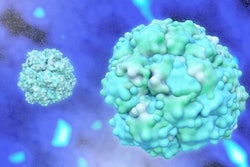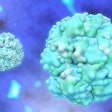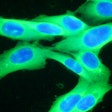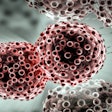
Texas Tech University researchers have developed a deep-learning network model and microscope that analyzes cancer cell images in order to classify them by type.
They believe their research, published Tuesday in APL Machine Learning, may enable medical practitioners to better predict the metastatic potential of these cancer cells.
Cancer cells that initiate metastasis — the spread of the disease from its primary location — are different from cancer cells that remain within the original tumor. Distinguishing metastasis-initiating cells from other cancer cells can determine the severity of the disease and help oncologists decide on the best course of treatment.
Current methods of categorizing cancer cells often require advanced instruments and time-consuming techniques. Some studies have used magnetic nanoparticles to track cancer cells. However, the researchers felt that attaching these nanoparticle labels could potentially affect the downstream analysis of the cells and integrity of the measurements.
They sought to develop a less-complicated process that required less time, fewer resources, and no chemical labels. The tool they developed requires a simple microscope and a small amount of computing power to produce results that they contend are on par with or better than those yielded by more sophisticated techniques. Their classification procedure also requires no additional chemicals or biological solutions, making it a label-free identification method of metastatic potential.
The workflow steps for their cell-classification project include gathering data sets by taking pictures of the cells, training the model, evaluating the performance, and implementing a final progression tool for cancer invasiveness. After submitting an image, the neural network tool converts the data to a probability. A result lower than 0.5 categorizes the cancer as one cell type, while a number higher than 0.5 designates another. The tool was trained to optimize the accuracy of predictions with a set of images of two cancer cell lines. It reached over 94% accuracy across the data sets used in the study.
Currently, the training data only accounts for single cancer cells. However, since research indicates that circulating tumor cell clusters may be more responsible than single cells for the spread of cancer, the researchers aim to extend and generalize the model to include both single cells and clusters.
“Cancer cells are highly heterogeneous, and recent studies suggest that specific cell subpopulations, rather than the whole, are responsible for cancer metastasis,” Wei Li, co-author and Texas Tech University associate professor of chemical engineering, said in a statement. “Identifying subpopulations of cancer cells is a critical step in determining the severity of the disease.”



















